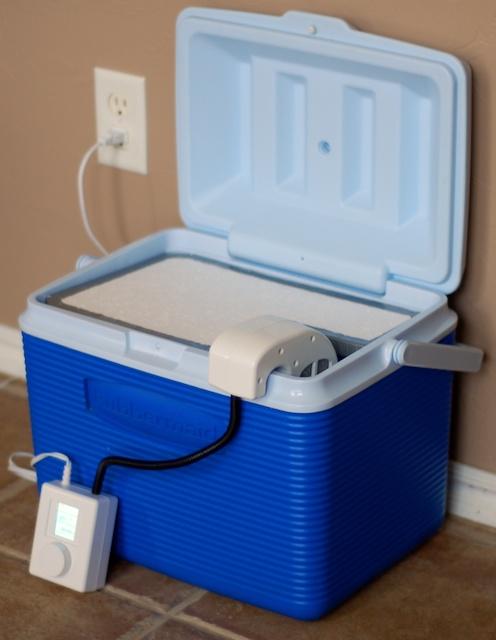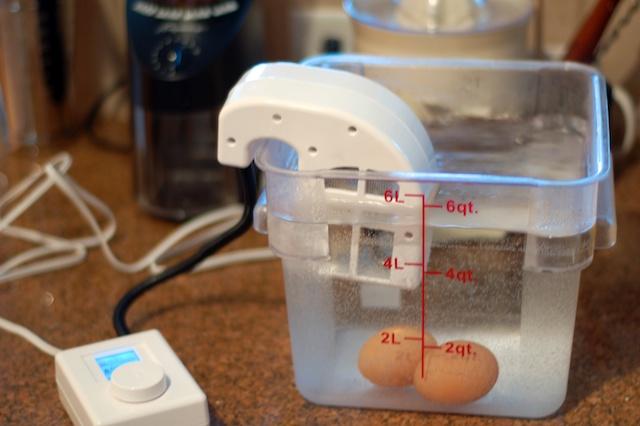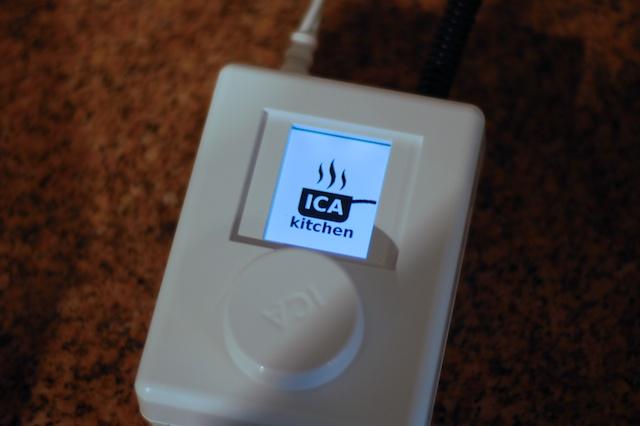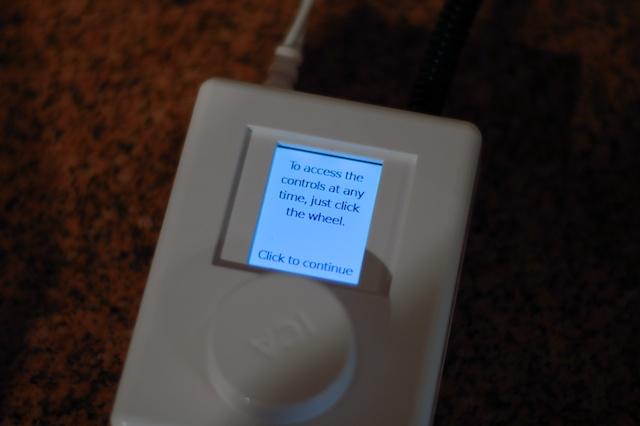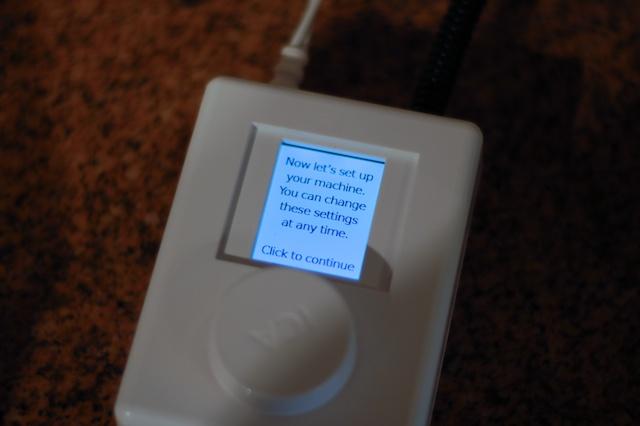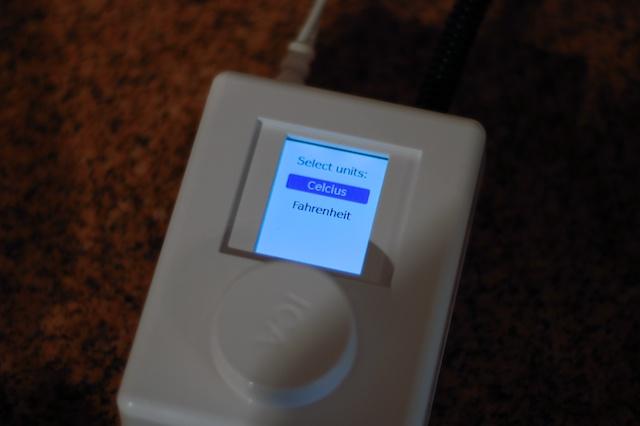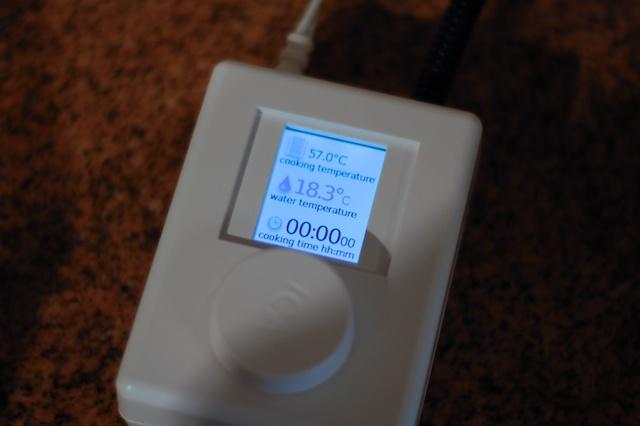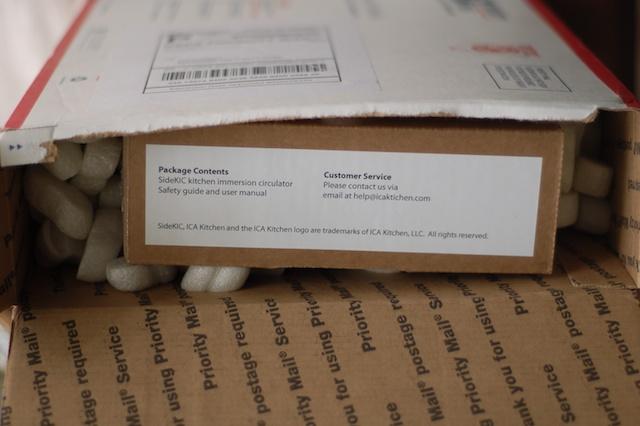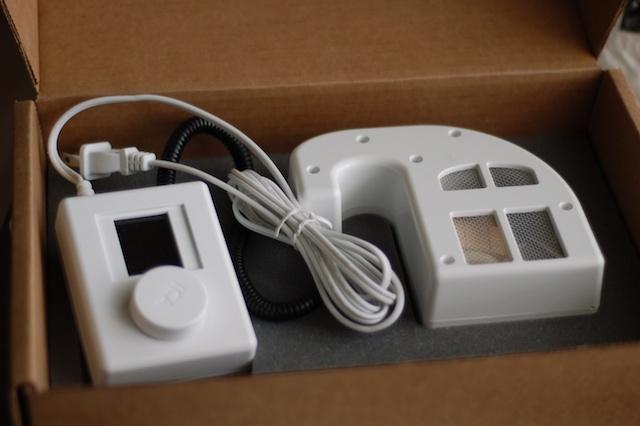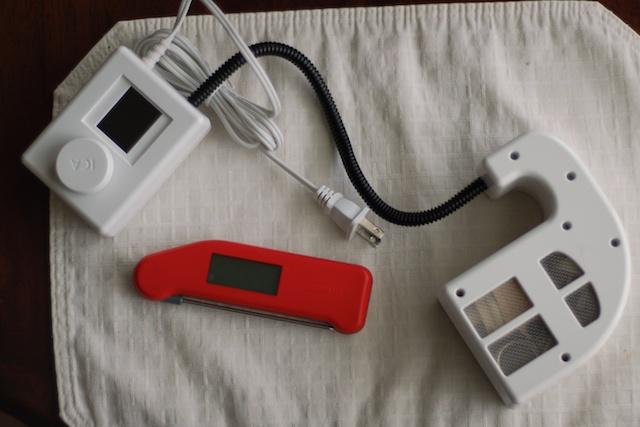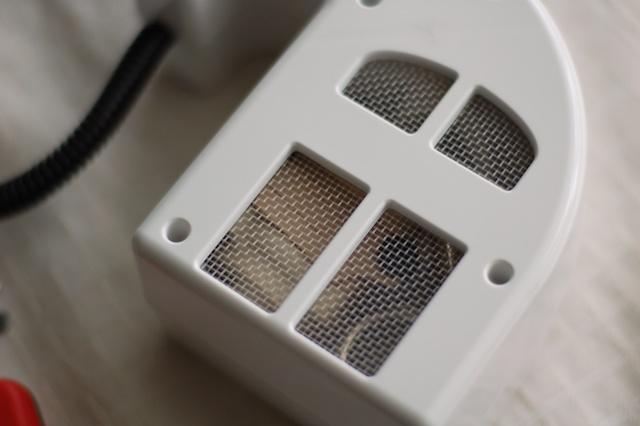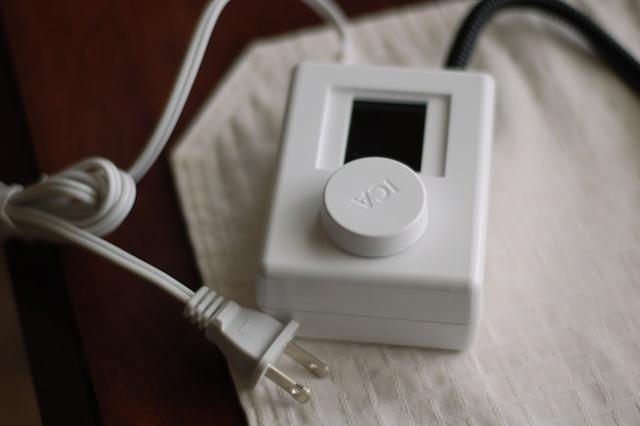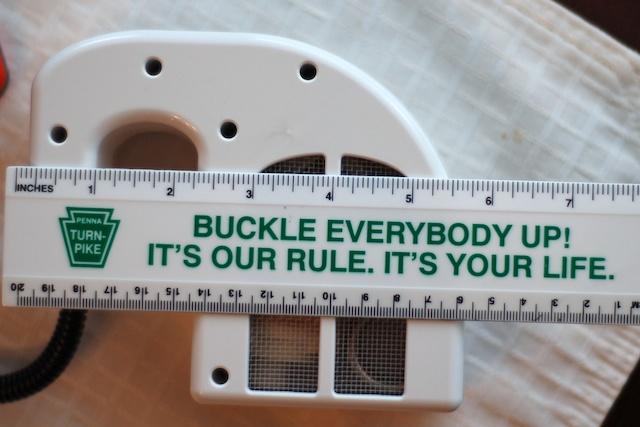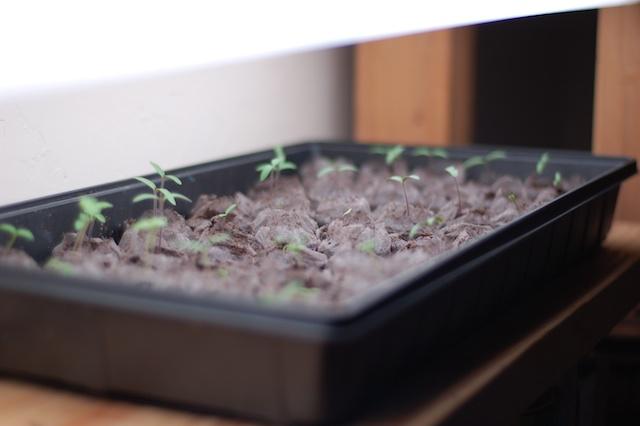-
Posts
10,190 -
Joined
-
Last visited
Content Type
Profiles
Forums
Store
Help Articles
Everything posted by Chris Hennes
-
Thanks for the post, Duncan (no need to apologize for its length, you are nowhere near the eGullet record ). My update is that there is nothing to report: at the moment the heater has been running for a bit over eight hours since the reset and is completely rock solid at 63.0°C, running in stealth mode with two power bars lit up.
-
The plot thickens... I ask because since I reset it this morning, it appears to be holding a much steadier temperature (perfectly steady, in fact... every time I've spot checked it today it has read exactly 63.0°C, 0.2°C higher than my Thermapen reads and probably within the margin of error). However, when it was making all the noise the temperature was fluctuating much more. So I just turned the temp up a couple degrees, and bang, it started making the noise again. It made the noise for maybe a minute, and then it died down, well before the temp had actually increased enough, so presumably it was still heating even though it was quiet. So this led me to a new hypothesis: what if somehow at some point the device got confused and started behaving more or less like a bang-bang controller, and was throwing full power at the heater whenever it needed any power? When I unplugged it to blow dry it, that reset whatever was wrong, and when I plugged it back in it went back to normal. Maybe the heater only makes that noise when it first starts heating all the way up, but is otherwise silent.
-
Duncan, is this a bang-bang control for the heater, or proportional?
-
Nope, no voltage, I'm in no danger of electrocuting myself (at least, not from this project ).
-
It wasn't the pump (which runs continuously), it was definitely the heater making the noise (which was intermittent). If you've ever listened to the noises a cheap drip coffee maker makes when it starts heating up the water you'll recognize what I was hearing. That doesn't mean that it wasn't foam bits interacting with the heater, however, which may also have gone away when blow dried.
-
OK, starting from the knowledge that the device didn't make the noise yesterday I started guessing at things that might be different today: first, after long cooking maybe a condensate has built up somewhere in the non-submerged portion of the unit. Second, maybe something in my water has built up on the heater. Third, repeated heat cycling may have moved some internal parts. Fourth, the stars are in a slightly different alignment. Could be cosmic rays, too. To test the first, I removed the device from the water and blew it dry. I put it back in and... viola. No more noise (so far, it's been two hours). Obviously by blowing warm air through the device I could have affected a number of other things, so this isn't a conclusive source of the problem, but it's a piece of evidence in that direction. Now, we see if the problem comes back tomorrow, and if the same thing fixes it.
-
I think the flour is for texture, not structure, so I don't see the harm in trying it. Worst case, the staff gets a few sub-par lava cakes to snack on.
-
No problem, we're debugging here. If everything worked right the first time I'd be out of a job! Alas, the noise is annoying enough that my wife will almost certainly demand the device be turned off when she gets home. I'll keep experimenting.
-
In Modernist Cuisine the authors add L-cysteine (an amino acid) to the dough for their hamburger buns to relax the gluten in the dough: has anyone experimented with this stuff? I've got a recipe here for pita bread that calls for dough relaxant and was hoping to use the L-cysteine I've got instead.
-
Increasing the water to be somewhere in the region of the middle of the upper screens didn't affect the noise.
-
How high can I go with the water? Is it a problem if it goes up to, or even covers, the top screens?
-
This morning the heater noise has increased considerably. You know the noise a drip coffee maker makes when its internal heater kicks on? It's that noise. It has gotten louder since yesterday, though, so I'm not sure what gives (I don't actually know the physics of what causes that noise, so I have no hypothesis here).
-
I agree (obviously!) — the styrofoam top dramatically reduces evaporation: even with this unit's water-depth sensitivity issues I didn't have to add any water until this morning, my loss is around 1cm per day at 63°C. ETA: it also lets me use a much larger-than-recommended water bath since it greatly reduces heat loss.
-
And the first thing you should make in it is the caramelized carrot soup from Modernist Cuisine: it's a fantastic soup that can't be made any other way.
-
Let the abuse begin... yeah, the beer cooler is quite a bit more than 10 liters, but it's very well insulated, and with the lid on there the SideKIC managed to raise the water the last 10°C (from 53°C to 63°C) in just under an hour. There's a brisket in there now for the next 72 hours. Fingers crossed...
-
That addresses part of the problem, but I still find that I have to fill the container higher than I would like, and therefore have to be quite careful about how much the water level is going to rise when I add the food. The margin for error is just a bit too small for my liking. I agree that the whole point of the device is "that it is small and simple and cheap" however, so if adding a few cm of depth brings the price over $200 it's not worth it.
-
I'm going to disagree with ScoopKW on a few points: I agree completely that it ought to stick deeper into the water, but I don't think I'd find any use for adjustable depth (do other units on the market have such a thing?), and upon actually using the device I'm not sure the addition of another moving part and another point of failure to make the unit clamp better is actually a good tradeoff. The simplicity of the current design is an asset, I think, I just wish it went deeper. I should also note that evaporation is always a concern, regardless of the pump depth: you can't ignore it on long cooks no matter what device you are using. The software is very simple: I think once the unit has been shipping for a while and they've made a few revisions it will stabilize completely. I don't want an electrically conducting hole in an appliance that sits next to a big splashy pot of water. And a plug to cover the hole is yet another part to fail. Again, I don't see this as being worth the tradeoff. Having observed water droplets trickling down the cord that connects the two again I'm in favor of the one-piece design that minimizes failure points and connections where water might infiltrate the controller. The unit isn't big enough to worry about whether I have to send both pieces or just one in for repair. In my opinion there are two physical non-software changes that should be considered: the addition of a noise-making device of some kind for alarms and the like, and increasing the depth that the circulator reaches into the water by perhaps 5-10cm. Otherwise, keep it simple.
-
Well, the pressure cooker opens up a new set of recipes and techniques. The cutting board makes your prep marginally easier (assuming it's bigger and flatter than whatever you are currently using) and looks a bit better on the counter. Don't get me wrong, I love a good cutting board. But if these are your options I'd choose the pressure cooker.
-
Here's how I've got it set up right now (making some soft-boiled eggs a la Modernist Cuisine): I tried tucking it into the corner like cbread suggests, but that puts the nozzle too close to the side of the container and creates a substantial vertical wave that threatens to overtop the container. In the end I decided to just let it hang however it wanted to. I might concern myself with it later on for long-time cooks, but for 35 minutes I'm not going to stress out here.
-
The first time you plug the device in it gives you a quick tutorial and asks you what temperature units you want: It can't get much easier than that. Subsequent power-ons jump straight to that last screen there, showing its set temp, actual temp, and how long it has been running. The bottom line can be changed to a countdown timer as well. The next step was to turn it on and start playing. I hung it over the edge of a 6-quart stockpot and added five liters of water at 18.3°C (groundwater temp here right now). I set the temperature to 50°C and turned it loose: it took 27 minutes to come to temperature. It overshot by 0.7°C before decaying back down to the set temp. According to my Thermapen, however, when the reading on the device was 50.0°C, the actual temperature of the water was 50.4°C. It held that temperature within 0.2°C while it was running, however, in an uninsulated stainless steel vessel sitting on a countertop (basically a worst-case scenario). It think the device is probably useful for most high-precision cooking provided that you check the temperature with a more accurate thermometer and compensate accordingly before adding your food. The device itself it basically silent: the hum of the pump is very quiet, and is mostly covered up by the actual splashing of the circulated water. It does not appear to have a buzzer of any kind—it does not make a noise to indicate that the set temp has been reached, or that the countdown timer has finished, so I am assuming this means it does not have the means of doing so. I would strongly recommend to Duncan that future iterations of the board include a piezo device so that you can make a beep of some sort. Physically the device requires that your water level run relatively close to the top edge of your cooking vessel, and there is not a great deal of margin to accommodate level changes when adding food. The best way to deal with this is to use a relatively wide, shallow cooking vessel, rather than a deep, narrow vessel, to minimize the water level change when adding the food (of course, then you will definitely want a lid of some kind to minimize evaporation). The pump is strong enough that in my standard stockpot the water is pretty close to the rim when it's running: I'd prefer a little more margin. The countdown timer has a minimum five-minute granularity when being set: the minimum time you can set it for is five minutes and a maximum of 59 hours and 45 minutes. When the countdown timer reaches its conclusion the timer flashes on the screen for five seconds, and then begins counting up to tell you how far over you have gone (the pump does not stop running). It appears that it will only count up to the initial value of the timer: when I tested it I set it for five minutes, and when it had gone over time for five minutes, it reset to zero and started counting up again. I'd guess this is a software bug that has to do with how the device is checking for the timer completion, and is obviously very minor. However, in my opinion, without an audible beeper the timer is basically useless. In addition, it lacks sufficient granularity for cooks that last under 30 minutes (when a one-minute granularity is necessary, IMO), and cannot be set for longer than 59:45 so you can't do a 72 hour cook based on the built-in timer. Finally, I killed the power externally to simulate a power failure: the device turned back on and remembered the set temperature, but not the cooking time or countdown timer. It did not turn the heater or pump back on when power was restored. If power failure is a concern you will want to take additional measures to deal with it. My initial impression of the device is that even as it stands right now the SideKIC is worth the $175 it costs, when compared to the alternatives: it has some flaws, but if you have a decent thermometer and your own cooking timer most of them can be easily mitigated. I also think that with some very minor changes (some just software) it could be made an even better value. Obviously this is not a final verdict, since how well it holds up over time will clearly be important.
-
Well, the first thing I can tell you is the shipping is quick... It was shipped USPS (not my favorite option, but hey, it arrived...) Inside the box (after removing the documentation and a thin foam sheet): Here it is with a Thermapen for size reference: A close-up of the screen (which is a plastic material of some kind, and reasonably fine) The controller is basically just a screen and a clickable wheel: not many moving parts to break And courtesy of the Pennsylvania Turnpike, here is a better sense of the scale. In particular, the hook part is 1.25 inches wide, so should fit over the rim of most beer coolers: I've just fired the thing up, user interface info coming soon.
-
What are pineapple tomatillos?
-
Well, for those of us in the southern US it's getting on time to be ordering seeds and starting stuff inside. Heck, my cilantro simply self-seeded and grew straight through what little winter we had, I've been eating salsa more-or-less continuously. I've started my tomatoes and tomatillos a little early this year: Those are all Porter's Pride tomatoes since they are the ones that grew the best last year (it was hot here, the other tomatoes didn't set fruit). I'll start the peppers in a couple more weeks. What's on your food-growing agenda this year?
-
I'd suggest that capping the temp at 194°F/90°C would be more useful, if the cap is truly arbitrary: Modernist Cuisine recommends that a number of fruits and vegetables be cooked sous vide at that temperature, and capping there would allow us to use the SideKIC for about 99.9% of the sous vide recipes out there. With vegetables you can usually simply increase the cooking time to compensate for the lower temperature, but obviously it's easier to use the time/temp specified in the recipe.
-
Were you happy with the result you got?



